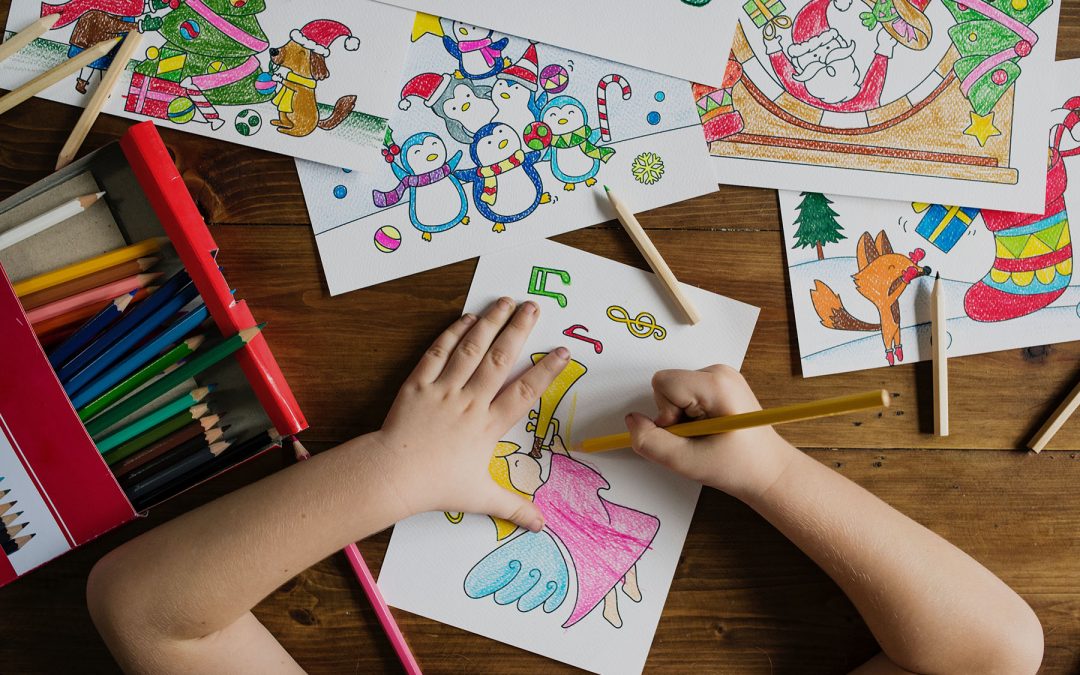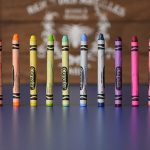Creative Play Benefits for Babies and Toddlers

The things our children are exposed to hones their personal development. One such ‘strategy’ of setting examples for your child to learn from is by giving them varied set of activities that can stimulate their imagination and creativity. This aids in their growth in every aspect such as emotionally, physically, socially, and intellectually. Creative play activities not only enhance your child’s development, but it also helps them improve their reactions and impulses. These activities require supervision but it is important to keep in mind that the best way to help your child is by letting them play and discover things by themselves for the most part.
Some examples of creative play activities are dancing, building blocks, and drawing. Any safe activity where they can make use of their senses, explore and experiment on objects would be something that would be useful to further their development. Parents should play their role and always praise and encourage their children when they are discovering new things. They should be complimented when engaging in tasks and achieving their masterpiece. Positive reinforcement will bring out a good outcome and motivate the children with their tasks. It will also give them a boost in their confidence and self-esteem. In school, creative play is involved as the main learning method for toddlers in nursery, playgroup or kindergarten. The children are taught and encouraged by the teachers the same way parents would if they were at home. Every activity and experience that children get from creative play will eventually benefit them as they grow older.

Benefits of Creative Play
As mentioned previously, creative play benefits your children in many ways. They are key to improving their emotional, cognitive and fine motor skills. They help develop different areas of their brain and stages of development.
Physical Development
A lot creative plays include hands-on activities. Playing with small toys, drawing, painting or doing puzzles can improve their fine motor skills and develop their hand eye coordination. This also enhances their muscle memory and the way they coordinate and control their hands. Repetition of these simple creative plays allows babies and toddlers to practice the physical responses of their body. Doing outdoor activities and creative plays that involve moving the whole body – not just the hand, improves their gross motor skills as well.
Emotional Development
Creative plays also play a vital role in the emotional development of babies and toddlers. Every task they do can be related to a feeling. This is basically human instinct and cannot really be taught. If a child enjoys the creative plays they are doing, they may feel happy and be filled with interest. Otherwise, when they do not like what they are doing, they will become irritated or show signs of distress. These feelings are expressed better as time goes by and as they grow. The time when they are still not yet able to verbalize their emotions, is the time they are slowly regulating and analyzing their emotions, in line with the social setting around them..
Social Development
Children often play with other children from school, the playground, or when out with their parents. Creative play comes into the scenario for these situations because children’s imagination runs wilder with company. When babies and toddlers interact with other people, even if they are not able to verbalize, it develops their communication skills by observation and imitation. Creative plays such as singing, dancing, and role-playing are some activities that can contribute to their growth socially.
Intellectual Development
Activities such as solving puzzles, building blocks, reading and other type of creative plays can stimulate a child’s problem-solving skills. The more the babies and toddlers are exposed to activities like these, the more they will use their imagination and sense of curiosity to explore options and courses of action to take. As they take in and adapt to the activities they do, it provides a clearer sense of familiarity and a little bit of understanding. Reading, especially, is something that should consistently be incorporated in their daily creative plays because it encourages comprehension and retention. In the long run, these activities establish better problem-solving skills that can be used to solve future complex problems.

How to Properly Enforce Creative Play
There is no struggle in implementing creative play with your children. The activities they do should be something natural. Parents can definitely provide props and guidance alongside doing creative plays but babies and toddlers should not be told what to do when they go and play. In fact, being able to self-initiate their play and be the one to take charge in what they are doing can build confidence and problem-solving skills in children. The best way for them to learn overall is to discover things on their own with none or just a little guidance from their parents. Supervision in children is overall of general importance so they would not be put in harm’s way.

Different Examples of Creative Plays and How They Benefit Babies and Toddlers
Creative plays are mostly simple activities that babies and toddlers do to entertain themselves like playing with toys and different objects. Each activity, however small it might be, helps them grow and familiarize themselves with what is around them.
Role Play
An interactive style of creative play where the whole family can be involved is doing “pretend play”. This is when the children, and maybe the participating adult, imitate life settings such as playing as a “doctor”, “family”, and “restaurant” and reenacting them in familiar situations. Props may also be added like clothes, hats, toys, and boxes to make the “make-believe” more believable and have a great time doing it.
- Benefits: It enhances their listening and conflict resolution skills. It also encourages their imagination to run wild.
Singing and Dancing
Singing and dancing are activities that babies and toddlers usually imitate whether from the people around them or from the TV or internet. It is a fun activity that parents can join along with.
- Benefits: Dancing enhances their gross motor skills and singing improves their rhythm and vocabulary.
Musical Instruments
Whether it is only musical toys or real instruments that they can hold, music play a huge part in the development of a child. Most baby toys have musical elements to it like buttons and rattles that they can use to play music. There are also toy musical instruments such as drums, guitar, ukulele, xylophone and even trumpets. These are ideal for toddlers that are only starting school.
- Benefits: It improves their cognitive skills. It also enhances memory, vocabulary, fine motor skills and is very fun and relaxing for children.
Arts and Crafts
There is almost an endless amount of arts and craft activities that babies and toddlers can do. Basic crafts such as drawing and coloring are natural entertainment for children. From a young age, they like to create small masterpieces. There is also an endless list of materials they can use to create arts and sometimes, it gets messy. Children can learn a lot of things by using their imagination and making art. Other materials that can be used are playdoh, chalk, clay, boxes and many more. For toddlers that have developed better fine motor skills, they might also want to start “projects” that require cutting and pasting objects. This needs supervision from parents and guardians as using any equipment to cut such as scissors can be very dangerous.
- Benefits: It helps them concentrate more and improve their visual analysis. It also develops their fine motor skills and hand eye coordination.
Building Blocks and Puzzles
There are a variety of types, sizes and shapes of building blocks and puzzles. All these different types can be beneficial in creative play. Legos are something a lot of kids love because it can be put together to form new creations, however, it comes in very small pieces. Babies and toddlers can still use building blocks like legos, but it needs to be a bigger sized set of blocks. Small pieces of toys and materials should not be given to babies and toddlers as it can be a choking hazard.
- Benefits: When played with other children, it encourages communication, physical play and it develops fine motor skills. It also helps in recognizing colors and shapes.
Reading
Books are a great source of knowledge for kids and adults alike. Babies start with picture books that have a few words for them to recognize and as they grow older into toddlers, more words are incorporated in the books meant for them. This activity is great for communication between parent and children. A lot of families make is a habit to have bed time stories wherein parents read a picture book every night to their children before they go to sleep.
- Benefits: It enhances communication skills, particularly listening skills. Looking at picture books also improves their memory and recognition, as well as vocabulary.
Baking
This activity needs guidance from parents. Involving children in baking can help them feel more responsible and attentive to instructions. Baking can involve drawing, and this adds to the fun element of the activity, as well as benefits for this type of creative play.
- Benefits: It improves their bilateral coordination, spacial perception and handling skills.






